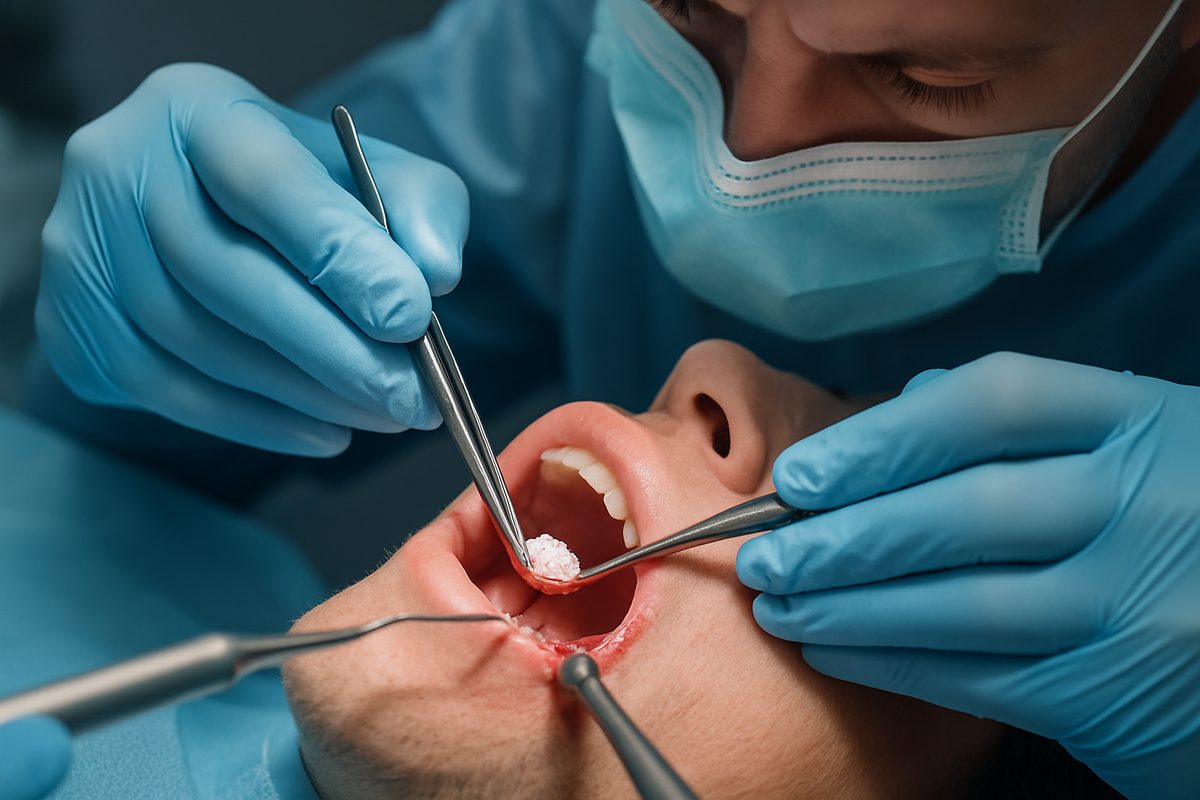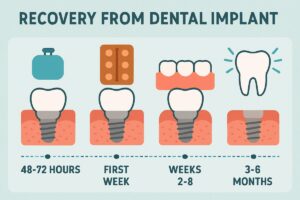A dental implant graft is a common question patients ask when they’re planning to replace a missing tooth. A dental implant graft refers to adding bone or bone-like material to the jaw so an implant has enough support. Many people wonder if grafting is always required and what the process looks like. This post explains what a dental implant graft is, why bone loss happens after tooth loss, when grafting is truly needed, graft types, recovery, newer options that may avoid grafts, and cost and planning tips. If you’re in Eastern Montana and researching a dental implant graft in Eastern Montana, this will help you know what to expect.
What Is a Dental Implant Graft?
A dental implant graft is a procedure that adds bone to the jaw where the implant will go. Bone grafting basics are simple: your dentist or surgeon places bone from another site or a bone substitute into the jaw to build volume and strength. Grafts can be done before placing an implant or at the same time, depending on the case.
Why Bone Loss Happens After Tooth Loss
How the jaw changes after missing teeth
When a tooth is lost, the jawbone in that area no longer gets the normal chewing forces that keep it strong. Over months and years the bone slowly shrinks — this is called resorption. Less bone makes implants less stable and can change how your face looks.
Common causes besides missing teeth
Other reasons for bone loss include infection, periodontal (gum) disease, trauma, and long-term denture wear. These problems reduce bone volume and can make a dental implant graft in Eastern Montana necessary for safe implant placement.
When Is a Dental Implant Graft Actually Needed?
Defining adequate bone for implants
Adequate bone means enough height and width of healthy jawbone so the implant can be placed without damaging nearby structures like nerves or the sinus. Your dentist uses x-rays or 3D scans to measure bone quality and volume.
Situations that usually require grafting
Grafting is often needed for thin ridges after tooth loss, large extraction sockets, defects from infection, or when the sinus is too close to the upper jaw. In these cases a dental implant graft in Eastern Montana helps create a predictable foundation.
When grafting might not be required
Sometimes grafts are avoidable. Immediate implant placement into a fresh socket, using narrow or short implants, ridge-sparing extraction techniques, or advanced digital planning can let some patients skip grafting.
Types of Bone Grafts Used for Dental Implant Graft Procedures
Autografts, allografts, xenografts, and synthetic options
Autografts use your own bone (best integration), allografts come from human donors, xenografts are animal-derived, and synthetics are lab-made. Healing times vary from a few months to six months depending on the material and situation.
Guided bone regeneration & membrane use
Membranes protect the graft and guide new bone growth. They help keep soft tissue out of the graft so bone can regenerate properly.
What to Expect During Recovery and Healing
Expect mild swelling, bruising, and soreness for a week or two. Bone grafts often need 3–6 months to heal before placing the implant. Watch for signs of infection — increasing pain, fever, or drainage — and call your dental team if they occur.
Alternatives and Advances That Can Reduce Need for Grafts
Options like zygomatic implants, short or narrow implants, ridge expansion, socket preservation, and precise digital planning can sometimes avoid a dental implant graft in Eastern Montana. Your dentist will review choices based on your health and goals.
Cost, Insurance, and How to Plan
Cost depends on graft type, graft size, imaging, and whether anesthesia is needed. Some dental insurance may cover part of the graft; many practices offer financing. A consultation and 3D scan give the best cost estimate.
Looking For Care and Expertise With Dental Implant Graft Treatments?
Dr. Barrie Matthews, DMD, a Montana native trained at the University of Pennsylvania, brings advanced implant and anesthesia training to Big Sky Smile Center. He and the team use conservative, evidence-based planning to decide when a dental implant graft is needed, focusing on safety and long-term results. Call to schedule a consult and find out if a dental implant graft in Eastern Montana is right for you.
Quick FAQs
Will everyone need a graft before implants? – No. Many patients do not need grafting, but those with significant bone loss often do. How long does bone graft healing take? – Typically 3–6 months, sometimes longer for large grafts. Is bone grafting painful? – Most patients report manageable discomfort controlled with meds; severe pain is uncommon. Can grafts fail and what happens then? – Grafts can fail due to infection or poor healing. If that happens, your dentist will treat the issue and may repeat grafting or choose an alternative implant approach.




